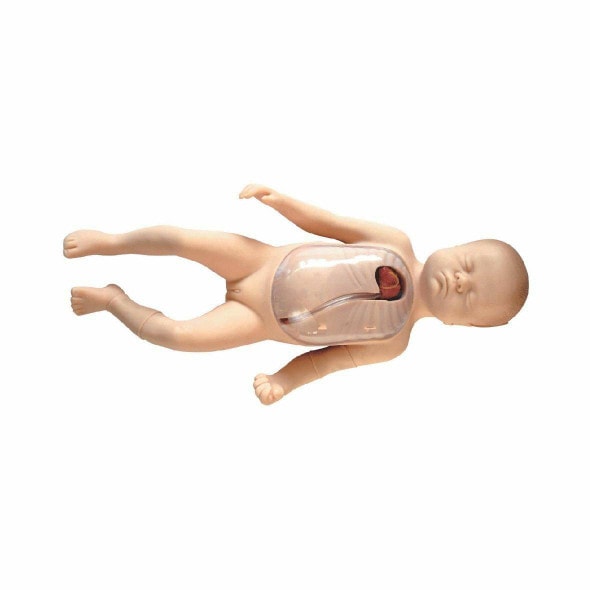Description
K-9 Intubation Trainer: Detailed Description
Overview
The K-9 Intubation Trainer is a specialized educational tool designed to replicate the anatomy and respiratory system of a canine, enabling veterinary professionals, veterinary technicians, and veterinary students to practice and perfect endotracheal intubation techniques. This trainer provides a realistic, hands-on experience essential for the safe and effective intubation of dogs during surgical procedures and emergency situations.
Purpose and Application
Endotracheal intubation is a critical skill in veterinary medicine, used to ensure a clear airway in anesthetized or unconscious animals. Proper intubation technique is essential to prevent complications such as hypoxia, airway trauma, or aspiration. The K-9 Intubation Trainer is designed to bridge the gap between theoretical learning and real-life application, offering a controlled environment for students and professionals to develop and refine their skills.
Key Features
1. Anatomical Accuracy
- The K-9 Intubation Trainer is meticulously crafted to mimic the anatomy of a medium-sized dog's head and upper airway.
- It includes detailed representations of the oral cavity, trachea, esophagus, and larynx, providing a realistic simulation of the challenges encountered during intubation.
2. Functional Trachea and Esophagus
- The trainer features a functional trachea and esophagus, allowing users to distinguish between the two during intubation.
- This differentiation is crucial in preventing accidental esophageal intubation, a common error in both novice and experienced practitioners.
3. Realistic Resistance and Flexibility
- The materials used in the construction of the trainer offer realistic resistance when inserting the endotracheal tube, closely simulating the feel of live tissue.
4. Visual and Tactile Feedback
- The trainer is equipped with visual and tactile indicators to simulate the successful passage of the endotracheal tube into the trachea.
- Users can feel the "click" of the tube passing through the vocal cords, and visual confirmation is provided through the inflation of a simulated lung or balloon, indicating proper placement.
5. Durability and Maintenance
- Built from high-quality, medical-grade silicone and durable polymers, the K-9 Intubation Trainer is designed to withstand repeated use in a busy educational environment.
- It is easy to clean and maintain, ensuring that it remains hygienic and ready for the next training session.
6. Portable and Modular Design
- The trainer is lightweight and easily transportable, making it suitable for use in various educational settings, including classrooms, labs, and mobile training units.
- Some models may include interchangeable components, such as different-sized tracheas or heads, to simulate various dog breeds or conditions, providing a comprehensive training experience.
Benefits for Veterinary Education
1. Skill Development
The K-9 Intubation Trainer provides a risk-free platform for students to practice and master the technique of intubation before performing the procedure on live animals, enhancing their confidence and competence.
2. Improved Patient Safety
By allowing veterinary professionals to hone their skills on a realistic model, the trainer contributes to improved patient outcomes, reducing the likelihood of complications during actual procedures.
3. Versatile Training Tool
This trainer is ideal for a wide range of users, from first-year veterinary students to experienced veterinary technicians seeking to refine their skills. It supports both individual practice and group instruction, making it a versatile addition to any veterinary education program.
4. Enhanced Learning Experience
The combination of visual, tactile, and auditory feedback provides an immersive learning experience, helping users to develop a deep understanding of the anatomy and mechanics of canine intubation.
Conclusion
The K-9 Intubation Trainer is an indispensable tool for veterinary schools, veterinary technicians, and professionals in the field. It not only enhances the educational process but also plays a crucial role in ensuring the safety and well-being of canine patients. By investing in such realistic and durable training equipment, veterinary programs can significantly elevate the quality of education and prepare their students and staff to meet the demands of modern veterinary practice.








